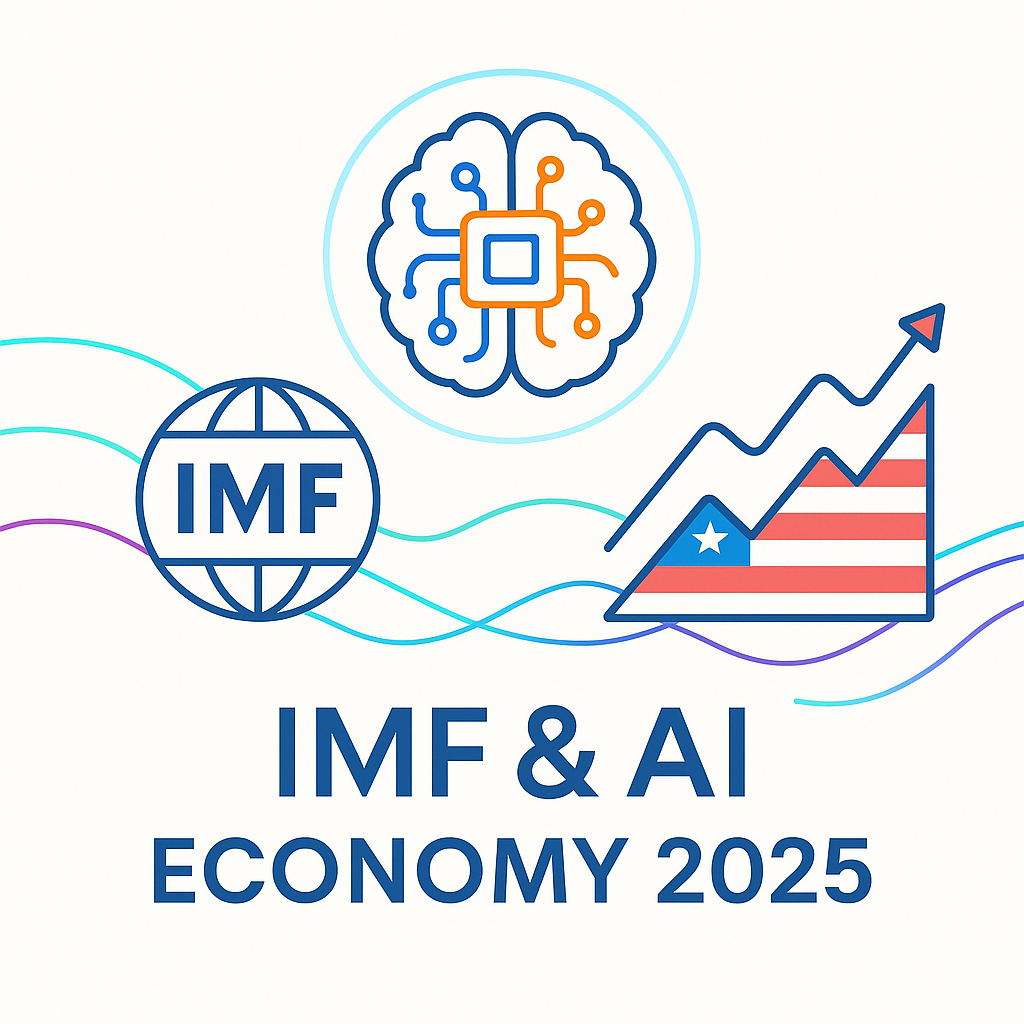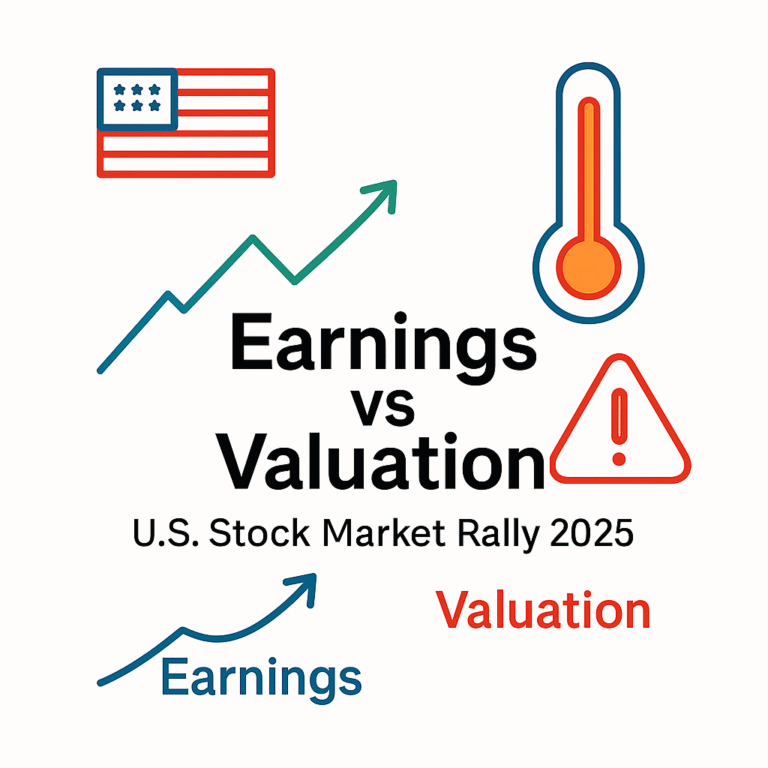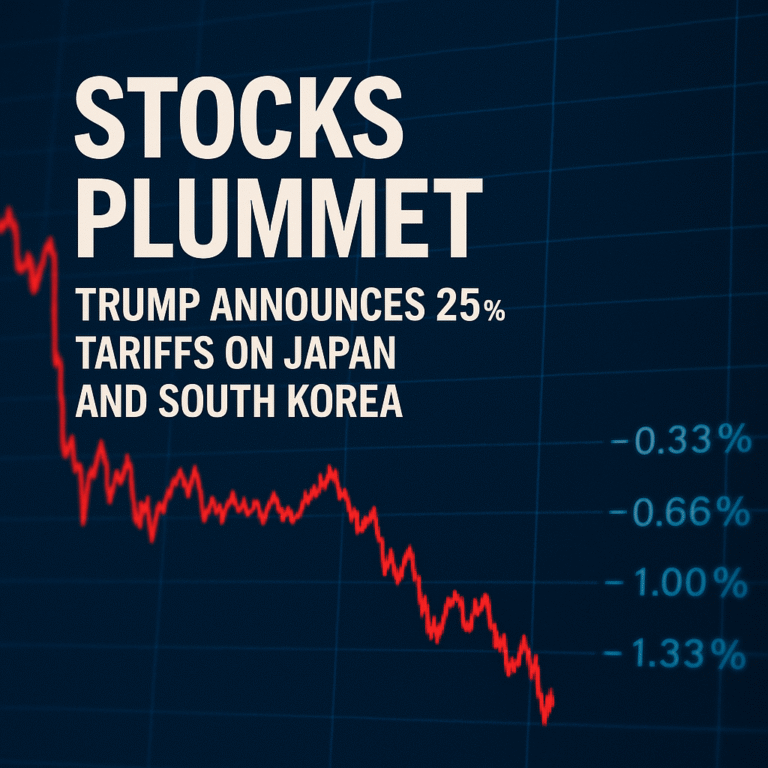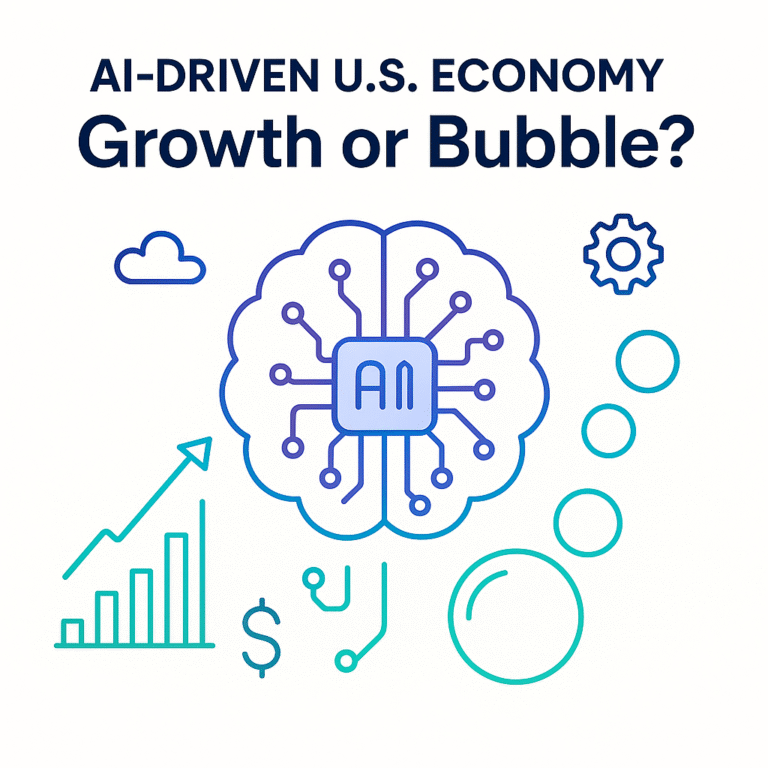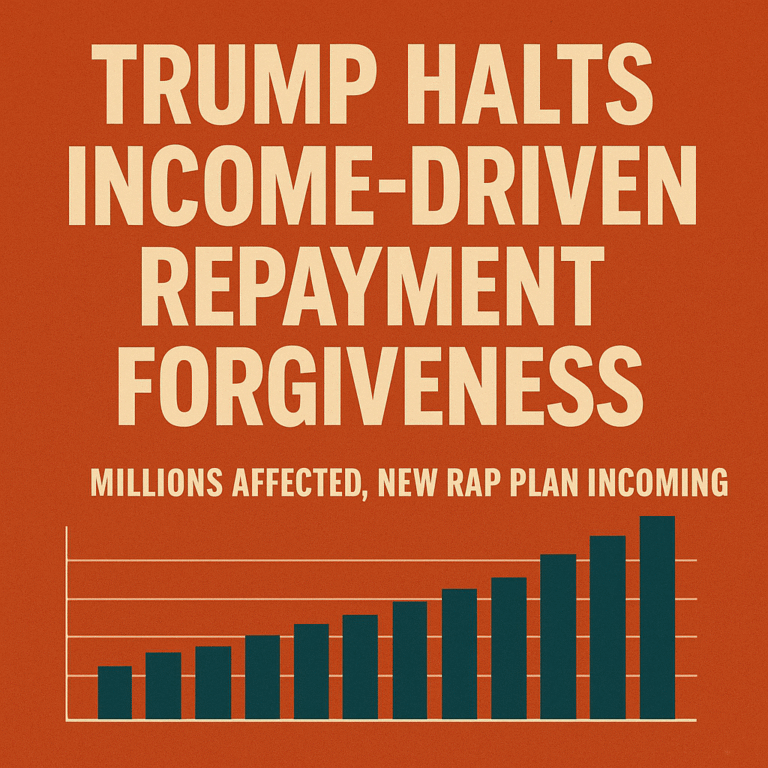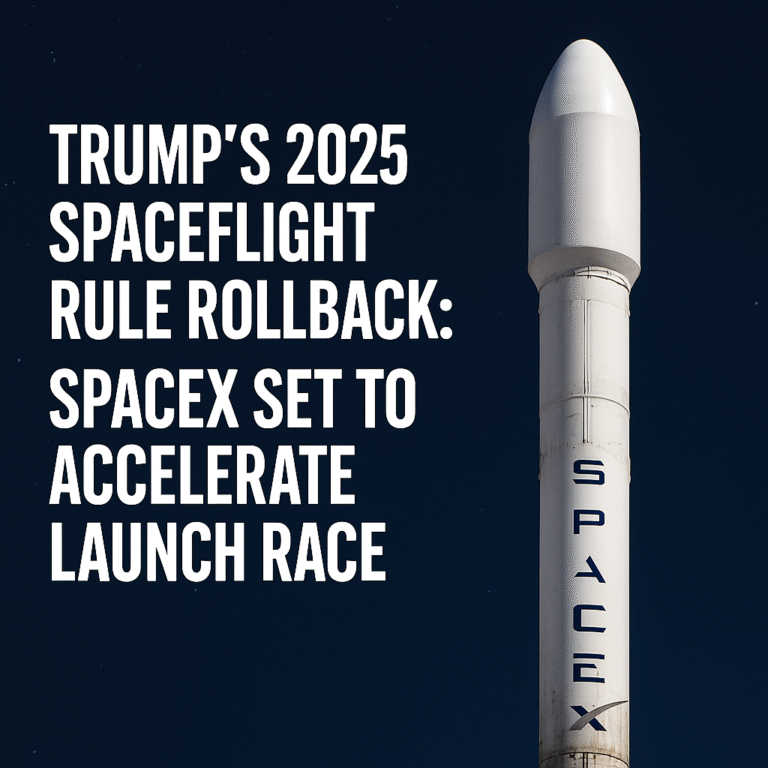IMF U.S. Economic Outlook 2025: How AI Investment Is Helping the U.S. Economy Avoid a Downturn
The IMF U.S. economic outlook 2025 suggests that AI investment is cushioning America’s slowdown. Learn how this AI-driven economy is reshaping growth forecasts — and the risks investors should watch.
Key Takeaways
✔ The IMF U.S. growth forecast 2025 was raised to 2.0%, supported by strong AI-driven capital spending.
✔ Risks include a potential AI investment bubble, non-bank financial sector exposure, and sticky inflation.
✔ Trade tensions and Fed rate policy remain key macroeconomic drivers.
✔ Investors should rebalance tech exposure and strengthen diversified portfolio strategies.
AI Investment Becomes the Shock Absorber in the IMF U.S. Economic Outlook 2025
In the IMF U.S. economic outlook 2025, artificial intelligence has taken center stage as a stabilizing force.
The IMF upgraded its U.S. growth forecast to 2.0%, crediting AI-driven capital expenditure for preventing a sharper slowdown amid weak global demand.
The organization explained that surging AI investment has boosted productivity expectations and sustained hiring in key technology sectors.
However, it also warned that this AI-driven momentum could carry bubble-like risk if investor enthusiasm outruns profitability.
In short, AI is now both a growth engine and a potential macroeconomic fault line in the 2025 U.S. economy.
Why the IMF Raised Its U.S. Growth Forecast: The Power of AI-Driven Spending
The IMF attributes its more optimistic U.S. growth forecast for 2025 to three overlapping trends:
- Resilient consumer demand supported by rising wages;
- AI infrastructure investment boosting productivity and tech exports;
- Looser financial conditions and a weaker dollar improving corporate margins.
While U.S.–China trade frictions and supply-chain bottlenecks persist, the IMF outlook 2025 finds that AI investment has partially offset the drag of external shocks.
Data Highlights from the IMF U.S. Growth Forecast 2025
|
Indicator |
2024 Actual |
2025 IMF Forecast |
Commentary |
|---|---|---|---|
|
U.S. GDP Growth |
2.8% |
2.0% |
Gradual slowdown but stronger than mid-year expectations |
|
Global GDP Growth |
3.3% |
3.2% |
Stable global expansion |
|
U.S. CPI Inflation |
~3.2% |
~2.7% |
Inflation moderating slowly |
|
AI Investment Share of GDP |
~1.3% |
~2.0% |
Near potential “AI bubble” zone |
Analysis:
According to the IMF U.S. economic outlook 2025, AI-related spending could reach nearly 2% of GDP — levels reminiscent of the early 2000s tech boom.
Still, the IMF stresses that this cycle differs from the dot-com era because AI growth is not debt-driven, limiting systemic contagion risks in the event of a correction.
Expert Commentary on the AI Investment Bubble Risk
IMF Chief Economist Pierre-Olivier Gourinchas told Reuters:
“This AI investment boom isn’t financed by debt. If a market correction happens, shareholders may lose, but the financial system as a whole is unlikely to collapse.”
Gourinchas compared today’s enthusiasm to the early dot-com surge — noting that while valuations may look stretched, the AI investment bubble risk remains contained.
IMF Managing Director Kristalina Georgieva also warned that governments lack adequate regulation and ethical frameworks to manage AI’s explosive expansion, calling it “a governance challenge within an AI-driven economy.”
Economic Implications in an AI-Driven U.S. Economy
Tech Stock Concentration and Overvaluation
AI-related mega-caps dominate U.S. indexes, amplifying market concentration.
The IMF cautions that inflated valuations could make equity markets vulnerable if growth expectations fade.
Inflation Pressure and Limited Rate-Cut Flexibility
AI infrastructure investment increases demand for energy and materials, potentially keeping inflation sticky.
This limits the Federal Reserve’s ability to ease rates quickly — a key point in the IMF U.S. economic outlook 2025.
Non-Bank Financial Institutions (NBFIs) Under Risk
The IMF warned that non-bank lenders may face liquidity stress during a market correction.
If the AI sector reprices sharply, non-bank financial exposure could spread through credit markets.
Trade Tensions and Supply-Chain Rewiring
AI geopolitics is now shaping global trade patterns.
Export restrictions on semiconductors and AI chips could disrupt capital flows and limit productivity gains — a risk flagged in the IMF 2025 global economic outlook.
Labor Market Shifts and “Jobless Growth”
AI adoption is automating middle-skill work faster than new roles can be created.
The IMF warns of a transition period where productivity rises but employment lags — a hallmark risk in an AI-driven economy.
Three Scenarios in the IMF U.S. Economic Outlook 2025
|
Scenario |
Economic Path |
Key Dynamics |
|---|---|---|
|
A. Soft Landing with Steady AI Growth |
GDP growth 1.8–2.2% |
AI capital investment sustains output; Fed gradually eases policy |
|
B. AI Bubble Correction |
Market pullback, tighter credit |
Valuations reset as speculative flows unwind |
|
C. Multi-Shock Slowdown |
Growth below 1% |
Trade wars, energy spikes, and geopolitical tensions converge |
The IMF’s baseline scenario aligns with a soft landing, driven by AI spending and resilient consumption.
However, it highlights that AI investment bubble risk and asset overvaluation could easily shift the narrative toward a mild correction.
Investor Takeaways from the IMF U.S. Growth Forecast 2025
- Rebalance Tech Exposure: Focus on profitable AI firms, not speculative plays.
- Diversify Across Asset Classes: Hold bonds, short-term Treasuries, and balanced ETFs for stability.
- Prepare for Volatility: Maintain hedges as AI-linked corrections can ripple quickly through global markets.
- Monitor Valuations in AI ETFs: Many AI-themed funds now trade at elevated multiples relative to earnings.
Investors should participate in the AI trend strategically — capturing innovation while managing macro and liquidity risk.
The AI-Driven Economy Needs Discipline, Not Euphoria
The IMF U.S. economic outlook 2025 paints AI as both a growth catalyst and a potential fault line for the world’s largest economy.
While AI investment is keeping the U.S. on a steady growth path, excessive optimism could lead to a speculative overshoot.
Sustainable expansion depends on whether AI spending translates into lasting productivity — not just market hype.
Innovation is essential, but discipline keeps investors afloat when the next correction arrives.

